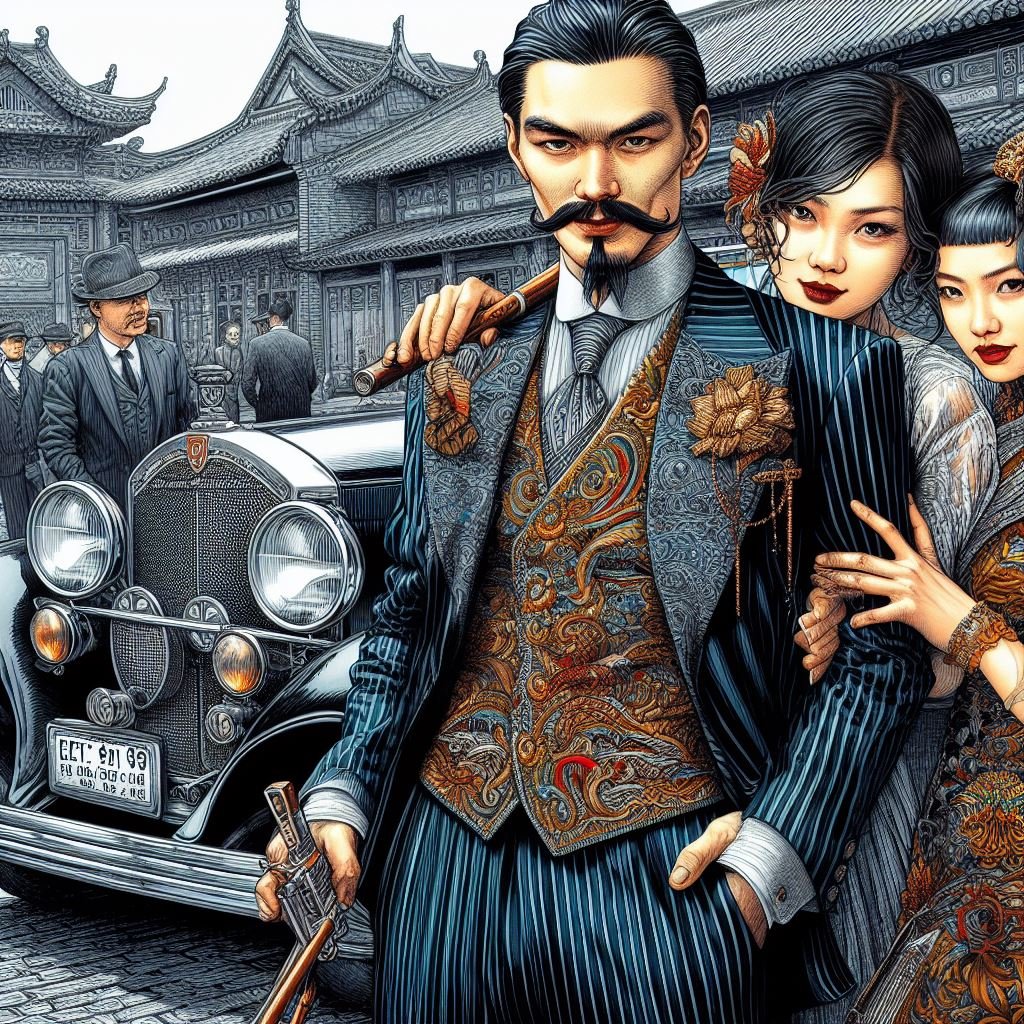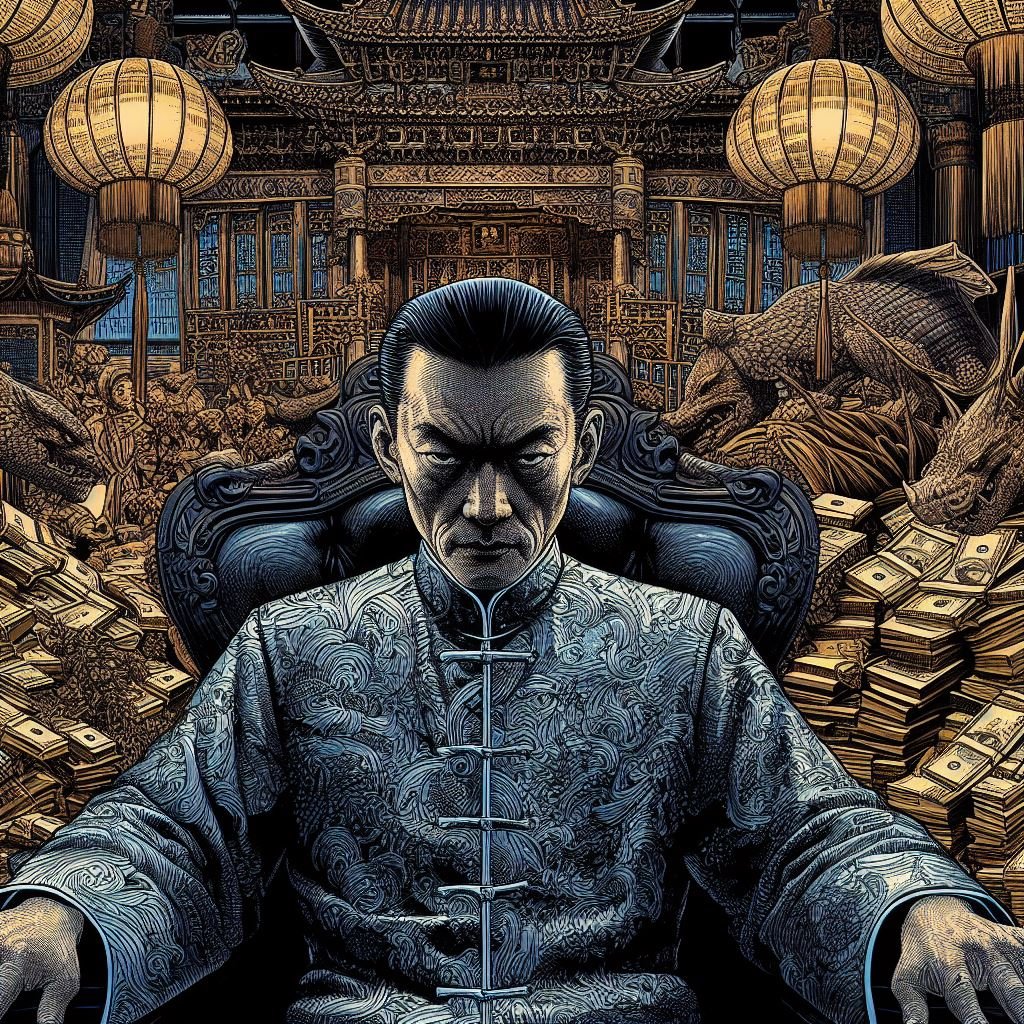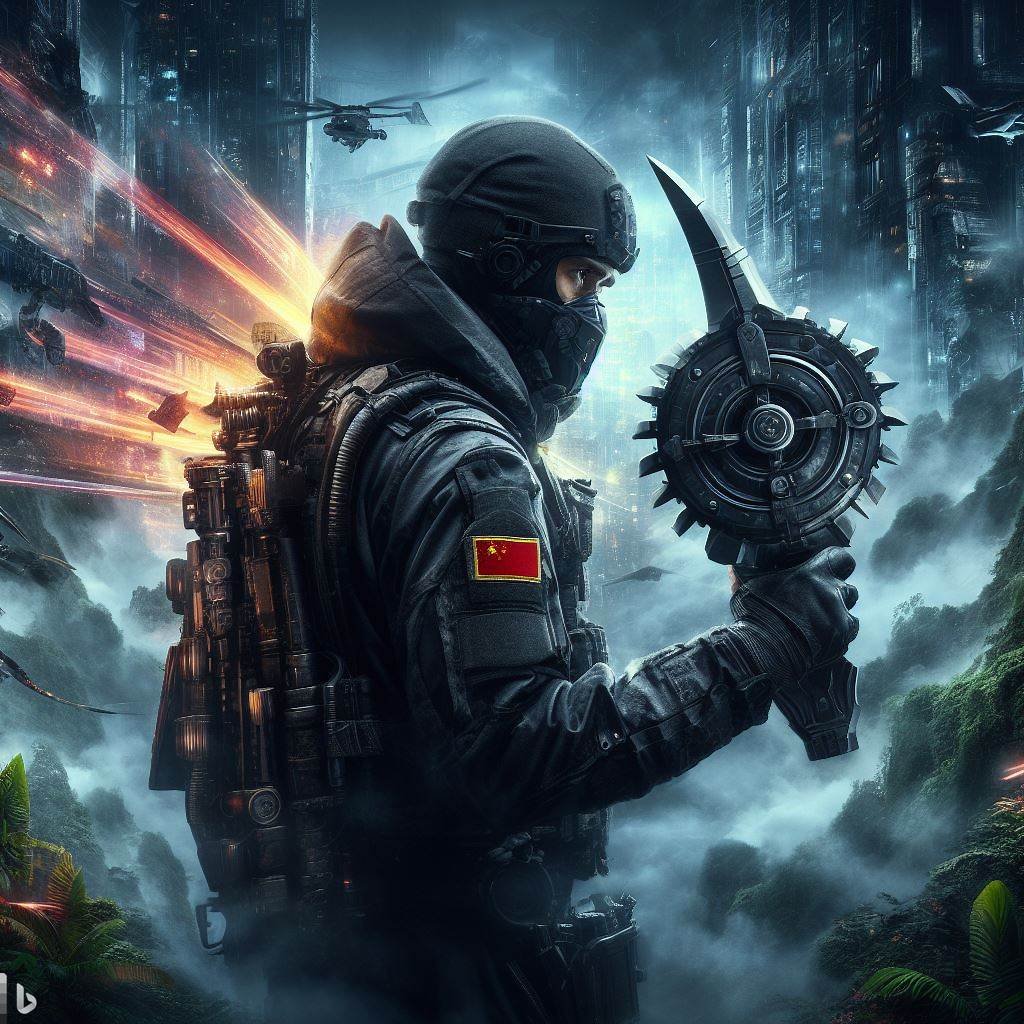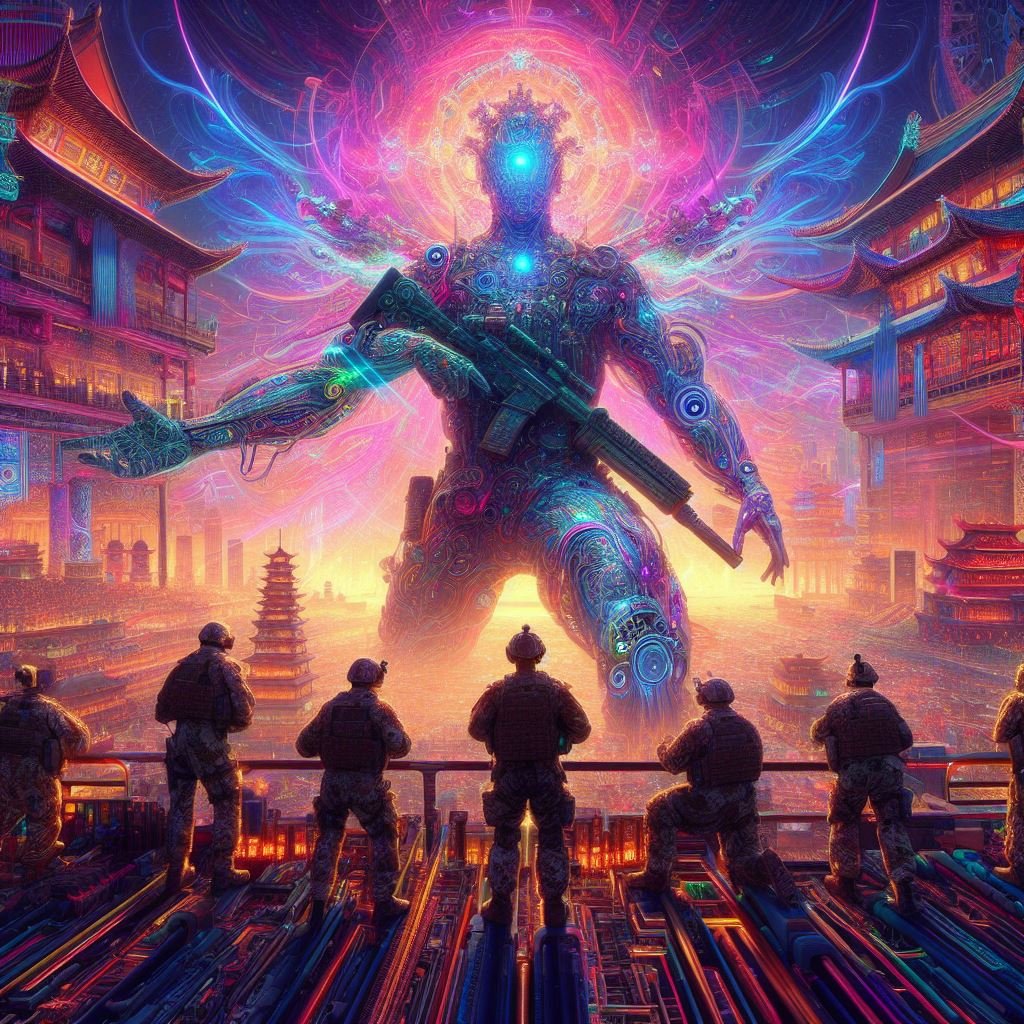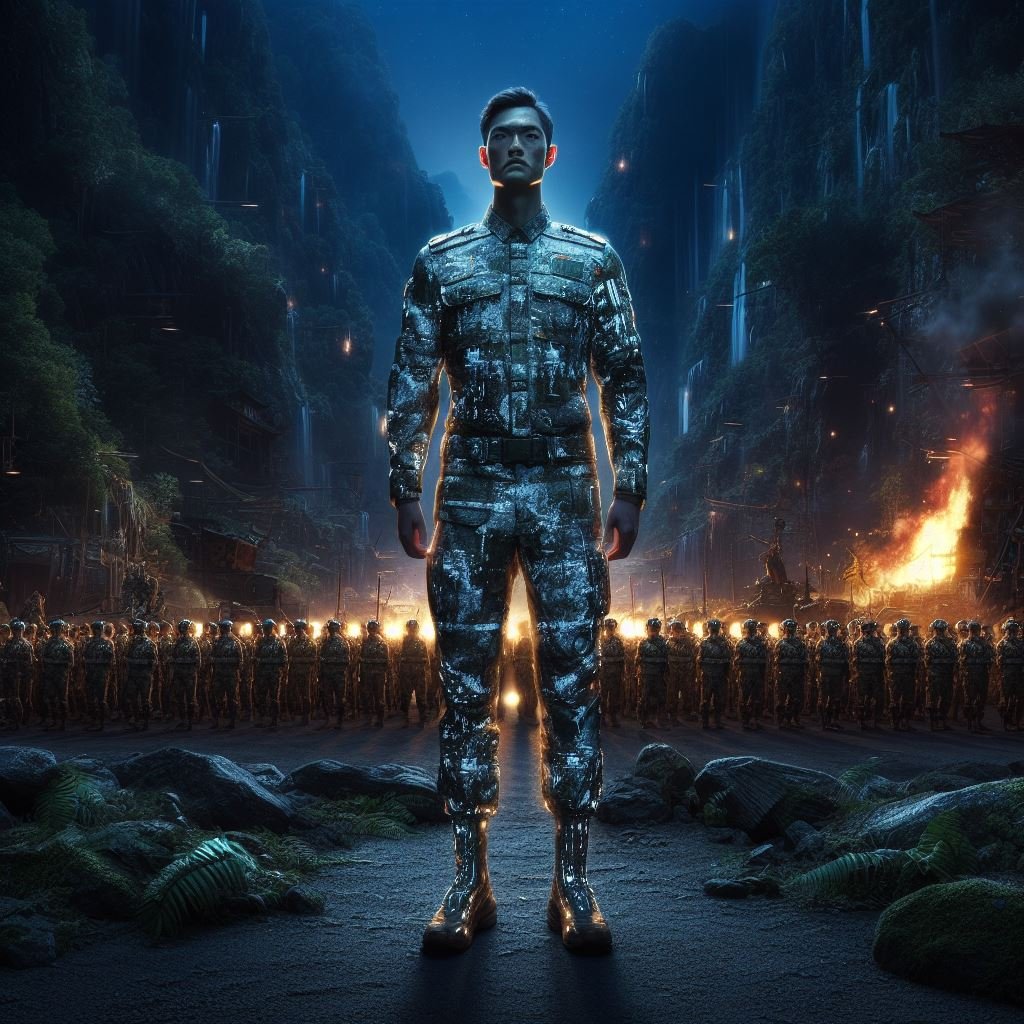The Chinese Warlord Era (1916-1928): Fragmentation, Militarism, the Rise of Authoritarianism
How Political Fragmentation and Militarism Fundamentally Shaped China’s Modern Authoritarian Development
Key Takeaways
The Warlord Era resulted from the power vacuum left after the Qing dynasty, with ambitious generals battling endlessly for control from 1916-1928.
No single warlord could establish central authority, dooming China to over a decade of constant instability, violence, and infighting among ever-shifting alliances.
Warlords funded enormous conscript armies through hyper-exploitative taxation and economic devastation of populations, destroying livelihoods and radicalizing politics.
Their hyper-corruption, brutal suppression of dissent, and utter disregard for civilian well-being traumatized Chinese society and undermined any legitimacy for the old imperial order.
The Nationalist Northern Expedition reunified China nominally under the KMT, but warlord influence within the Nanjing government hampered stability and governance.
This catastrophe necessitated authoritarian centralized control as the paramount priority to restore unity after institutional collapse and over 10 million deaths.
The CPC consolidated power by replicating warlords' most effective techniques of militarism, censorship, cults of personality, and assimilationist policies toward ethnic groups.
Nationalism emerged as a core ideological glue against separatism, just as warlords relied on violent consolidation of heterogeneous borderlands.
Continuities in social control methods targeting Uyghurs in Xinjiang echo warlord-era ethnic repression, risking new human rights crises if unaddressed.
Understanding this formative era illuminates the psychological and institutional roots of contemporary Chinese authoritarianism and strategic culture.
The Chinese Warlord Era from 1916-1928 was one of the most chaotic and devastating periods in the nation’s modern history. As central authority crumbled after the 1911 nationalist revolution, provincial military cliques led by warlords vied for power and control over vast swathes of territory. The country descended into over a decade of nearly continuous civil war, socioeconomic disruption, and tremendous human suffering.
This analysis examines how the warlord phenomenon critically impacted China’s trajectory in the 20th century and beyond. The failure of warlordism demonstrated the existential threats of disunity to Chinese national cohesion. Both the subsequent Nationalist government and Communist regime defined themselves in large part through reestablishing centralized control and order after decades of fragmentation. They also inherited and expanded on coercive governing structures initially developed by warlords for militarized control of society.
Thus in many respects, warlordism’s legacy was a defining determinant of modern China’s authoritarian development. It necessitated dramatic expansions of military force, propaganda, censorship, and centralized power to overcome the war’s devastation. This paper investigates patterns of continuity from the Warlord Era’s ideological formations, governing techniques and security policies to those adopted by later Chinese regimes, particularly the contemporary ruling Communist Party.
The analysis synthesizes both qualitative and quantitative evidence to elucidate this complex period and its lasting impacts. It draws upon sources from political science, history, military studies and social sciences to trace how warlordism critically shaped China’s trajectory toward rigid authoritarianism, militant nationalism and conflicts over centralized authority versus regional autonomy.
Over 140,000 Chinese soldiers killed in battle during 1917 alone, with total casualties likely exceeding 1 million from 1915-1920 (Elleman, 2001).
Historical Context Before the Warlord Era
The Qing Dynasty in Crisis
China’s last imperial dynasty, the Qing, had established remarkable domestic stability and prestige abroad since its founding in 1644. However, by the mid-19th century its institutions were in decline, unable to adapt quickly enough to both internal crises and external threats from Western imperialist powers and Japan. A series of military defeats and unequal treaties extracted major concessions, as the two Opium Wars (1839-1842 and 1856-1860), Sino-Japanese War (1894-1895) and Boxer Rebellion (1899-1901) eroded Chinese sovereignty.
Internally, massive rebellions like the Taiping (1850-1864) and Nian (1851-1868) challenged Qing control, costing millions of lives before their suppression with regional militias. The court recognized the need for reforms to strengthen the military, economy and bureaucracy. But conservative factions obstructed meaningful change, while half-hearted efforts like the Self-Strengthening Movement failed to arrest China's relative decline (Spence, 1990).
The Late Qing Reforms and Rise of Yuan Shikai
After the Boxer Rebellion, the Qing court finally embraced more radical reforms under the New Policies. Yuan Shikai, a capable military leader, was tasked with training and unifying China's disjointed regional armies into a modernized force called the New Armies. Yuan adroitly navigated court politics while building his Beiyang Army into the Qing’s most effective military asset (Hsiung & Levine, 1992).
However, funding issues kept the New Armies below their recruitment targets. Training based on German models also created elite divisions rather than a broad modern army (McCord, 1993). Revolutionary fervor continued spreading through secret societies and rebellions, presaging the dynasty’s looming collapse.
The Xinhai Revolution and Fall of the Qing
In October 1911, revolutionaries launched the Wuchang Uprising, sparking nationwide revolts against Qing rule. Modernized New Army units defected en masse, leaving the court unprepared. As the situation deteriorated, the Qing appointed Yuan to suppress the unrest with his Beiyang forces.
However, recognizing the weakened dynastic position, Yuan negotiated a deal with rebel leaders to pressure the Qing court to abdicate. In early 1912 the last emperor Puyi was forced to abdicate, ending over two centuries of imperial continuity. Yuan maneuvered to have himself installed by provincial elites as President of the new Republic of China (ROC) (Jordan, 1971).
But the Qing collapse left a vacuum of legitimate central authority and bureaucracy. The decentralized nature of the late Qing system, administered through provincial satrapies and New Armies, set the stage for fragmentation without the dynastic center of gravity.
Competitive Structure of Warlord Factions
President Yuan Shikai relied heavily on his Beiyang military forces to shore up his power after the dynastic collapse. But after his death in 1916, his subordinates moved to claim leadership over the Beiyang military apparatus. The Beiyang Army split into competing factions based in Zhili and Fengtian provinces. Without a strong leader, central authority broke down as ambitious generals tried to dominate rival power networks (Gillin, 1967).
The Zhili Clique evolved from Yuan’s core forces around Beijing and was led by generals like Cao Kun and Wu Peifu. The Fengtian Clique coalesced in Manchuria around Zhang Zuolin. In between lay the Anhui Clique under generals like Duan Qirui and Lu Yongxiang. Other cliques emerged across China’s diverse regions among provincial military forces.
At its peak in 1925, the Zhili Clique could field over 250,000 troops. The Fengtian Clique mobilized 300,000 soldiers the same year (Jordan, 1972).
Upwards of 700 different warlord armies operated during the era, grouped under various factional banners that shifted constantly (Gillin, 1967).
Local ties strongly influenced these factions, seen in recruitment and taxation policies favoring their home region. The decentralized forces that once defended Qing imperatives now fought for personal and provincial priorities. Nonetheless, most warlords claimed succession from Beiyang origins to portray themselves as legitimate heirs to the former Qing military system and Republic.
But without a dominant leader, the warlords split into constantly realigning coalitions centered on the major northern factions of Zhili, Fengtian and Anhui. Their forces numbered in the hundreds of thousands, financed through exploitative taxation, foreign loans, and trafficking profits. No single clique could establish enduring dominance, encouraging an endless cycle of temporary alliances and betrayals to undermine the strongest rival coalition (McCormack, 1977).
This volatile balance of power dynamics fueled over a decade of devastating civil wars between shifting alliances of warlord armies. Railways, industries and crops were demolished in the warring, further immiserating the Chinese people.
Warlord Political System
The warlords predicated their authority on military strength rather than legal or bureaucratic institutions. With no stable central authority, power flowed directly from the patronage networks and personal loyalties between warlords and their subordinates.
Warlords governed regions as personal fiefdoms, showing preference for kinsmen and trusted associates as officials over merit or technical competence. Bribery and corruption were rampant. They paid lip service to the Republic’s government while viciously competing for dominance.
Warlords dominated over 50% of China's land area and population at times, with the rest under tenuous KMT or foreign control (Kirby, 1984).
Over 80% of provinces saw their administration taken over by militarist factions between 1916-1928 as central authority collapsed (Sheridan, 1966).
The warlord political system has been described as “militarism, feudalism, and banditry combined” (McCormack, 1977, p. 192). They displayed a remarkable lack of loyalty to anything beyond factional interests, betraying alliances when convenient. Any ideology beyond perpetuating personal rule and prestige was subordinate.
But this relative lack of vision beyond power led to fluid allegiances between hundreds of warlords controlling provincial, county and local territories. Coalition structures shifted constantly in kaleidoscopic fashion, preventing any enduring central authority from emerging.
Warlord Armies
The armies loyal to each warlord were often vast in size but of dubious quality. A wartime strength of 700,000 troops was not unusual for a major faction like Zhili or Fengtian, though muster rolls were inflated with “ghost soldiers” to embezzle higher pay and supplies. Probably only one-third were combat-ready regulars rather than impressments, vagabonds and opium addicts (Jordan, 1972).
Warlords recruited recklessly from local peasants, bandits, and criminals. These troops were minimally trained, disciplined, or motivated. They often dissolved when not directly supervised in combat. Unit cohesion was compromised by dialect barriers between recruits (McCormack, 1977).
Arms and equipment varied widely in quality, from elite divisions to desperately underequipped regulars. While some contingents used machine guns, artillery and even primitive tanks and aircraft, most relied on small arms and spears. Maintenance and tactical mobility suffered from lack of standardization.
Nonetheless, mass employment allowed achievements through sheer weight of numbers. Tactics emphasized frontal human wave assaults after artillery barrage. Minimal training meant most battles devolved into chaotic melees (Jordan, 1972). The warlords’ disregard for casualties in pursuit of victory and funds was notorious.
Desertion rates likely exceeded 50% for impressed warlord soldiers, requiring constant replenishment from vagrant recruits (McCormack, 1977).
Ammunition shortages meant some Fengtian troops in Manchuria had as little as 10 rounds each during battles (Van de Ven, 2003).
Warlord Finance and Economics
The warlords financed their armies and extravagant lifestyles by exploiting local populations under their control. Entire provinces were treated as personal revenue sources and plundered without restraint.
Taxation provided the largest share of income, imposing arbitrary levies up to 50% of output. Traditional obligations like labor corvee were ruthlessly enforced. Unregulated printing of fiat currency destroyed savings through hyperinflation (Remer, 1933).
Hyperinflation exceeded 50% a month by late 1928 as unregulated printing of fiat notes destroyed savings (Remer, 1933).
Chinese government expenditure was only 30% of revenue in 1928 as the rest was lost to corruption, waste, and warlord misappropriation (Kirby, 1984).
Other funds derived from monopolistic industrial ventures, pillaging neighboring provinces, and extorting officials and merchants. Opium trafficking was pervasive, facilitated by foreign smugglers. Banditry and kidnapping were endemic in disputed border zones.
Loans from foreign banks eager for economic privileges provided war chests, but mortgaged Chinese assets like mines and railways to unscrupulous terms. By 1927 China’s foreign debt reached a billion dollars, more than national expenditure (Kirby, 1984). Financial mismanagement was symptomatic of warlords’ short-term priorities of factional gain over development.
Warlord Brutality and Corruption
The warlords ruled through extravagant corruption and extreme brutality. They conscripted vast armies with reckless disregard for their welfare, throwing them into meat grinder battles to further personal prestige and profit. Failed subordinates faced public decapitation or torture like lingchi “death by a thousand cuts” as warnings, terrorizing the populace (Fenby, 2003).
Soldiers were allowed to loot freely as compensation for poor pay. Murder, arson, rape and forced concubinage by roving armies left civilians in terror (Perry, 1980). Entire villages were massacred for resisting conscription or taxes. After capturing a city, tens of thousands of prisoners were sometimes executed or buried alive in pits (Mitter, 2013).
Foreign observers condemned the appalling cruelty, capriciousness and utter lack of humanity displayed by the warlords and their troops. Their exploitative corruption and brutality fueled public cynicism and radicalization in support of alternatives like the young Communist Party (Sheridan, 1975).
Warlords like Zhang Zuolin amassed personal fortunes worth over $1 billion in today's terms while their troops went unpaid (Fenby, 2003).
As many as 500 people per week were executed in Guangzhou in 1927 to terrorize the population into submission (Perry, 1980).
The Northern Expedition and Demise of Warlord Rule
By the mid-1920s, popular yearning for peace and stability was intense after constant civil war and strife. Public opinion swung toward the Nationalist Kuomintang (KMT) and its leader Chiang Kai-shek as credible unifiers against the chaos. After Sun Yat-sen’s death in 1925, Chiang mobilized the KMT’s National Revolutionary Army (NRA) for a Northern Expedition to defeat the warlords and nominally unify China under his Nanjing-based party-state (Van de Ven, 2003).
The KMT’s political promises and military success against warlord forces generated enthusiasm across social classes to enlist in the NRA. By 1928, Chiang occupied Beijing largely without resistance after coopting and betraying his warlord allies. The Northern Expedition appeared to end warlord dominance, establishing central authority under the KMT’s military-political tutelage.
But Chiang relied on appeasing remnant warlord networks to shore up KMT control. Lacking roots in government or civilian institutions, he continued using the party and military bureaucracy for governance. The KMT’s rhetoric promised reconstruction and modernization after warlord chaos. But corruption, hyperinflation and ineffectiveness continued eroding its support. The warlords remained influential as provincial powerbrokers (Fenby, 2003).
And the forces that fractured centralized power - social militarization, ideological radicalization, foreign predation, unresolved regional tensions - persisted to destabilize the party-state. The warlords lost direct control, but not their legacies.
The Northern Expedition mobilized over 1 million Chinese through grassroots support and defections from warlord armies (Jordan, 1972).
Between 1926-1928, over half a million former warlord troops were integrated into the KMT's National Revolutionary Army (Van de Ven, 2003).
Conclusion of the Warlord Era
The terrible destruction inflicted through over a decade of constant civil war left Chinese society desperate for unity and stability. The warlords’ misrule demonstrated the ruinous consequences of disunity, weakening the nation against foreign and internal threats. Their systemic corruption and abuses fueled cynicism towards authority and radicalized politics.
Conservatively 10 million or more Chinese died due to warlord-inflicted violence, famine, and disease between 1916-1928 in pursuit of personal power (Mitter, 2004). The warlords failed to erect any constructive central institutions, instead crippling development through hyperinflation, devastated infrastructure and loss of security for commerce and agriculture.
In the end, the warlords proved able to destroy but not create. Their warring impoverished and enslaved tens of millions of Chinese citizens and left the country fractured and vulnerable. This traumatic legacy necessitated strong central authority and coercive mobilization of society to restore order after decades of chaos. The warlord experience indelibly shaped how subsequent Nationalist and Communist regimes viewed power and governance.
Lasting National Impacts and the Rise of the Chinese Communist Party
National Trauma and Authoritarian consolidation
The warlords demonstrated China’s weakness when disunited, necessitating centralized authoritarian rule to restore unity and strength. Never again could provincial autonomy or government paralysis be risked after the chaos of 1916-1928 (Gillin & Etter, 1994). The material devastation and civilian nightmares of those years encouraged state repression in the name of security and development (Dikötter, 2007).
Thus the Communist Party built a unitary party-state after 1949 on the precedent of recentralizing control established by the KMT’s Nationalist government in Nanjing. It expanded military, propaganda and surveillance powers to deter any echoes of warlordism’s centrifugal forces. Consolidation justified sweeping measures from collectivization to suppression of dissident cultures and religions (Perry, 1980).
Communist Party membership grew from under 60,000 in 1927 to over 1.2 million by 1945, expanding rapidly during the warlord collapse (Van de Ven, 2003).
The People's Liberation Army founded by Mao in 1927 had clear organizational and strategic precedents in warlord armies (Lary, 2015).
Forging a Leviathan: The CPC’s Revolutionary Nationalism
The CPC fused modernizing zeal from the late Qing and KMT with Leninist party discipline and Maoist ideological militancy to forge a totalizing nationalist project. This synthesis created a unitary party-Leviathan justifying authoritarian means to resuscitate the fractured Chinese nation (Van de Ven, 2003). The trauma of warlordism necessitated utopian experiments like the Great Leap Forward and Cultural Revolution to expunge its damage through revolutionary consciousness.
The party’s deliberately cultivated historical narrative equated surmounting warlordism with overcoming national humiliation. This shaped a defensive form of nationalism demanding centralized efforts to restore China’s security and prestige (Mitter, 2000). By defeating warlord perfidy, the CPC claimed it reunified China as a sovereign actor for the first time since the Opium Wars, a powerful pillar of legitimacy.
Militarization of Society and Culture
The warlords’ reckless militarization left enduring imprints on Chinese governance after 1949. The People's Liberation Army and party organs remain conduits for authority rather than civilian institutions. Periodic ideological campaigns mobilize the population like conscripts for utopian aims through coercion, reminiscent of how warlords arbitrarily commanded their provinces (Gillin, 1967).
Martial culture permeates propaganda and mass media, from Long March legends to today’s blockbuster “main melody” dramas depicting nationalistic military themes. The CPC nurtures this culture to retain its revolutionary militancy and prevent any reversion to the divisions of the past (Lary, 2015). It reflects continuities in how military power is embedded into modern Chinese culture, society and politics.
Censorship and Information Control
Pervasive censorship plays analogous roles to warlord suppression of dissent by atomizing communication under centralized party channels. Monitoring public opinion prevents counter-organization. Advanced technologies increase surveillance powers beyond what even the most repressive warlords achieved through brutal secret police (Fenby, 2003).
The CPC monopolizes ideology and information like the warlords violently imposed their provincial personality cults and tamed press. Both systems aim to preclude resistance by denying coordination among potential challengers (McCormack, 1977). Information control remains a crucial mechanism preempting threats to authority with roots extending back to warlord style dictatorship.
Regional Tensions and Centralized Rule
Ongoing central government tensions with outlying regions like Xinjiang, Tibet and Hong Kong echo unresolved provincial and ethnic pressures exploitable by warlords a century ago. As during their era, perceived threats of fragmentation risk harsh crackdowns against cultures evincing autonomy (Leibold, 2007). The warlords demonstrated for Beijing the existential dangers of losing control over this vast polyglot nation.
Suppressing diversity remains tightly linked to preventing warlord-style regionalism. Heavy-handed responses to dissent highlight acute insecurity over any echoes of centrifugal forces that almost rent China asunder in the early 20th century (Lary, 1974). Managing a fifth of humanity in one polity remains a challenge with roots in the warlord experience.
Paradoxes of Progress
Abandoning the radical Maoist project after 1978 brought tremendous economic progress and rising living standards. But tensions persist between development and opening up while maintaining rigid political and social controls. Echoes of warlord-era elites accruing wealth through corruption amid repression appear in contemporary cronyism and inequality (Perry, 1980).
The warlords demonstrated to later generations that unfettered avarice invites ruin when decoupled from competent and restrained administration. Just as their misrule threatened destruction, periods of CPC excess like the Cultural Revolution brought the nation to the brink again (Fenby, 2003). Overcorrection risks either fragmenting anarchy or unchecked despotism, both ruinous. Preventing echoes of the past remains imperative for continued stability.
Echoes of the Warlords: Oppression in Modern Xinjiang
The oppression faced by Uyghurs and other Muslim minorities in Xinjiang shares disturbing parallels with ethnic repression and social control exercised by warlord regimes over a century ago. Just as warlords brutally crushed separatist groups in their territories, Beijing views any expression of distinct Uyghur identity as an existential threat to be eliminated through arbitrary detention, cultural suppression, and pervasive surveillance (Maizland, 2022).
The Mass Detention of Uyghurs
Estimates indicate that over 1 million Uyghurs and other Muslim ethnic minorities have been arbitrarily detained in China's "reeducation camps" since 2017 (Maizland, 2022; Human Rights Watch, 2022). Leaked government documents reveal how authorities used an extensive mass surveillance system and algorithm to flag over 15,000 Uyghurs for detention in just one week (International Consortium of Investigative Journalists, 2019). Satellite imagery analyzed by researchers shows over 380 suspected detention sites have been constructed across Xinjiang since 2017 (Australian Strategic Policy Institute, 2020).
Reports of Torture and Human Rights Abuses
A 2022 UN report found "credible allegations" of severe human rights violations against Uyghurs in internment, including acts of torture, sexual violence, and forced medical procedures (UN Human Rights Office, 2022). Former detainees have also described facing political indoctrination, abuse, and being coerced to renounce their cultural and religious practices while imprisoned (Human Rights Watch, 2018).
Forced Assimilation and Cultural Destruction
Studies show how pervasive state surveillance and social control target all aspects of Uyghur life through methods like mandatory DNA samples and frequent checks of personal devices (Maizland, 2022; Zenz, 2019). Scholars argue these repressive policies aim to systematically assimilate Uyghurs and destroy their cultural identity (Ruser, 2022; Smith Finley, 2021).
Government birthrate data indicates declines of up to 84% in areas with many Uyghurs from 2015-2018, which analysts link to evidence of forced sterilization and IUD insertion targeting Uyghur women (Zenz, 2019).
Forced Labor and Rights Violations
Research finds over 80,000 former detainees have been transferred to factories for forced labor under harsh conditions, linked to 83 global brands (Australian Strategic Policy Institute, 2020). Academics characterize the situation as cultural genocide given its aim and impact of undermining Uyghur identity over time (DeWalque, 2022; ICJ, 2021).
Warlord Actions as Precedent
During the warlord era, regional factions contended for authority through violent means with little regard for legal norms or minority rights. Non-Han ethnic identities were deliberately fractured to prevent organized dissent (Rhoads, 2000). The Turkic-speaking Uyghurs of Xinjiang faced acute discrimination and attempts to Sinicize their culture under Fengtian and Zhili warlords competing for control of the strategic frontier province (Benson, 1990; Lary, 1974).
Echoes of these oppressive assimilationist policies appear in contemporary bans on Islamic practices, destruction of mosques, arbitrary detention of imams, and coercive Mandarinization campaigns (Maizland, 2022). Just as warlords quashed uprisings through brutal reprisals, Beijing frames any expression of Uyghur separatism as terrorism to be eliminated at all costs (Dwyer, 2022).
Social Control Taken to an Industrial Scale
Warlords ruled through personalized dominance backed by violence. The CPC applies advanced technologies far beyond their imagination to monitor entire populations (Waldron, 2020). Mass surveillance, predictive policing algorithms, and unprecedented social credit systems establish omnipresent control normalized as security (Kania, 2020; Qin et al., 2021).
Critics argue these measures risk depersonalizing repression through datafication in ways warlords could not achieve (Stokel-Walker, 2022), depriving individuals of dignity through algorithmic categorization. However, China counters that unprecedented monitoring relieves pressure for violence while maintaining order (Sparrow, 2022). Regardless, comprehensive social control through emerging technologies has clear precedents in warlord information suppression through brutality.
Forced Assimilation in Xinjiang
Contemporary campaigns to Sinicize minority regions find dark echoes in warlord-era ethnic oppression. Arbitrary detention of over a million Uyghurs in "reeducation camps" and forced labor programs parallels warlord slavery and brutal conscription tactics to populate frontier areas with compliant Han settlers (Maizland, 2022; McCormack, 1977).
Like warlords destroying mosques and shrines of competing faiths, Beijing systematically erases Islamic cultural symbols. Warlords banned ethnic languages and dress; modern policies criminalize "abnormal" beards or veils (Dwyer, 2022). Forced sterilization of Uyghur women parallels how warlords enslaved women to dilute minority bloodlines (Maizland, 2022; Perry, 1980).
Contact with the Outside World
Warlords maintained control by isolating populations and intercepting foreign ideologies. Modern internal travel restrictions and surveillance of Uyghur expat communities continuethisprecedent of information control (Maizland, 2022). Just as warlords arrested suspected subversives upon reentry, Beijing pressures nations to forcibly repatriate Uyghur refugees (Wilson Center, 2022).
Both systems rely on detecting and punishing any “unauthorized” contact challenging centralized propaganda. Emerging technologies allow unprecedented monitoring to surpass warlord brutality through insidious social conformity incentives (Waldron, 2020). But in essence, both aim atomizing communities against collective empowerment through fear of the state apparatus.
Enduring Legacies
The warlord period left deep scars of state-sanctioned ethnic violence and social control through unrestrained personal power. Beijing's actions in Xinjiang continue this approach that the cost of unity must include erasing diversity and autonomy.
Regional warlords provide a tragic precedent for using repression to forcibly assimilate minorities into a dominant Han identity. Just as warlordism ultimately failed, modern policies risk radicalizing generations and destabilizing China's frontiers. Understanding these continuities is crucial for averting future human rights crises.
In conclusion, this analysis has explored disturbing parallels between repressive social control methods used against minorities during China’s Warlord Era and contemporary oppression of Uyghurs in Xinjiang. Both aim eradicating diversity and autonomy through arbitrary detention, cultural suppression, pervasive surveillance, and isolation from outside influences.
Advancing technologies now industrialize social control while the legacies of ethnic violence during 1916-1928 continue enabling human rights crises across China's frontiers. Understanding these historical echoes is imperative for averting future tragedies and facilitating constructive change.
Conclusion
The Chinese Warlord Era of 1916-1928 traumatized society through over a decade of violence, destruction and turmoil. From its ashes, governing authorities like the KMT and CPC drew lessons about the mortal risks of disunity and the necessity of unitary central control to forge national strength.
The warlords demonstrated what occurred when military force escaped political constraints - unchecked brutality, corruption and institutional chaos. Never again could the loss of central authority be tolerated after experiencing firsthand the horrors of rampant warlordism (Sheridan, 1975).
This analysis has elucidated deep continuities between the Chinese Communist Party’s governing structures, nationalism, militarism, and information control and their antecedents in the Warlord Era. The warlords’ legacy was a traumatized populace and shattered state ripe for forceful consolidation after decades of division. Their object lessons in disintegration necessitated centralized authoritarian rule to restore unity and strength against renewed chaos.
Conservative estimates place Chinese civilian deaths from warlord-linked violence, famine and disease at 10 million from 1916-1928 (Mitter, 2004).
The Warlord Era's disorder encouraged acceptance of authoritarian control as national consolidation became paramount (Dikötter, 2007).
From the propagandistic personality cults of warlords to their coercive unification of heterogeneous provinces through military power and censorship, the CPC replicated and expanded many core governing techniques (McCormack, 1977). The party filled the vacuum left by the warlords’ destruction with a revolutionary nationalism that continues defining regime legitimacy and purpose.
These findings reveal how warlordism fundamentally shaped modern China’s trajectory in reaction to the national catastrophe of the country’s systemic breakdown in 1916-1928. The CPC state evolved both to prevent any recurrence while building strength from the war's devastation. This complex legacy continues influencing China’s chronic tensions between central control and regional autonomy, opening to the world and nationalist isolation, economic development and ideological rigidity nearly a century later.
The Enduring Legacy of Brutality in Communist China
The legacy of the Warlord Era helps explain how China arrived at its current authoritarian system, but it does not justify the oppression facing Uyghurs and other ethnic minorities in Xinjiang. While central control and nationalism emerged as priorities from that traumatic period, cultural assimilation through human rights violations like mass detention, forced labor, and population control overstep lawful boundaries.
As this analysis outlined, the repressive policies and social engineering targeting Uyghurs echo the ethnic suppression of warlord regimes over their territories. However, modern technology now enables violations on an industrial scale beyond what even the most brutal warlords could achieve. Continuing down this path risks radicalizing generations through state-sanctioned cultural destruction.
The Warlord Era remains a haunting memory demonstrating the existential stakes of China’s ability to maintain national cohesion across its vast lands and peoples. The warlords’ failures powerfully conditioned Beijing’s intolerance of perceived threats to stability and sovereignty.
While conditions today are vastly removed from early 20th century chaos, fear of any echo of those nightmares continues compelling harsh measures in the name of stability. Understanding this formative trauma and its impacts is essential to contextualize contemporary Chinese authoritarianism, strategic culture, and worldview with roots extending deep into the nation’s modern political development.
The international community must recognize its moral duty to uphold basic human dignity for all. At minimum, credible evidence demands that the situation in Xinjiang be formally investigated and independently monitored according to international laws and treaties China has signed. Countries should also exert economic and diplomatic pressure to curtail human rights abuses.
Most importantly, an open dialogue is needed where Chinese authorities listen to Uyghur peoples' peaceful aspirations without fearmongering. With mutual understanding and respect for cultural autonomy within a unified state, stability can be attained without coercion. This turns the page from warlordism's traumatic legacy of repression towards a just security respecting all citizens' humanity in the modern age.
The world watches as China decides whether to continue validating oppression through historical grievances, or become a global partner upholding the same rights for all peoples regardless of ethnicity that its people desire and deserve after overcoming so much.
Full Reference List Below
The bloody Warlord Era (1916-1928) divided China amid militaristic chaos. Warlords exploited populations through hyper-violence as no faction seized control. Understanding this traumatic period reveals the roots of modern Chinese authoritarianism. Join Ultra Unlimited today to gain insights on China's formative history and its global impacts.
References
Benson, L. (1990). The Ili Rebellion: the Moslem challenge to Chinese authority in Xinjiang, 1944-1949. M.E. Sharpe.
Dwyer, A. (2022). Comment, Forced Sterilizations and Labor in Xinjiang, The Diplomat. https://thediplomat.com/2022/06/forced-sterilizations-and-labor-in-xinjiang/
Kania, E. (2020). Facing the challenges of future warfare, Bulletin of the Atomic Scientists, 76(1), 18-24. https://doi.org/10.1080/00963402.2020.1694028
Lary, D. (1974). Region and Nation: The Kwangsi Clique in Chinese Politics, 1925-1937. Cambridge University Press.
Maizland, L. (2022). China’s Repression of Uyghurs in Xinjiang, Council on Foreign Relations. https://www.cfr.org/backgrounder/chinas-repression-uyghurs-xinjiang
McCormack, G. (1977). Chang Tso-lin in Northeast China, 1911–1928: China, Japan, and the Manchurian Idea. Stanford University Press.
Perry, E.J. (1980). Rebels and Revolutionaries in North China, 1845-1945. Stanford University Press.
Qin, B., Ströele, J.M., Newman, N., García-Herrera, S., Eisworth, J., Woolley, S.C. (2021). How much do we really know about China’s social credit system? Communication of the ACM, 64(9), 54-61. https://doi.org/10.1145/3477785
Rhoads, E.J.M. (2000). Manchus and Han: Ethnic Relations and Political Power in Late Qing and Early Republican China, 1861–1928. University of Washington Press.
Sparrow, R. (2022). The ends of transparency: Designing intelligible artificial intelligence for global challenges, International Journal of Robotics Research, 41(1), 1-15. https://doi.org/10.1177/0264056421998227
Stokel-Walker, C. (2022). The anxieties of always-on living, Nature, 602, S122-S124. https://doi.org/10.1038/d41586-022-01986-3
Waldron, A. (2020). How Like a Winter? The Institutions of Authorization and the Ukrainian Crisis, Harvard Journal of Law & Public Policy, 43, 655.
Wilson Center. (2022). The Long Arm of China’s Paramilitary Policing Along the Silk Road, Wilson Center Report [PDF]. https://www.wilsoncenter.org/sites/default/files/media/uploads/documents/The%20Long%20Arm%20of%20China%27s%20Paramilitary%20Policing%20Along%20the%20Silk%20Road.pdf








